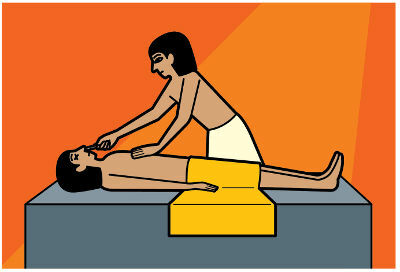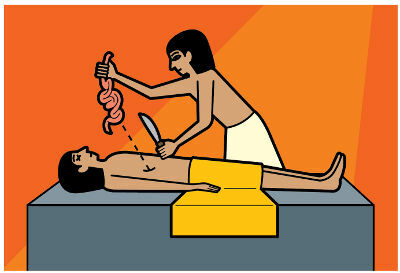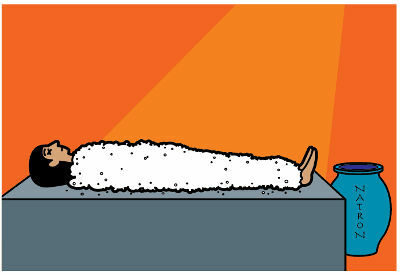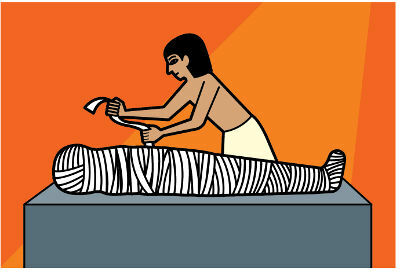defines itself mummification as the natural or artificial phenomenon of the preservation of a body. In this process, putrefaction occurs slowly, over many, many years.
The idea of keeping a body in good condition after death was put into practice by several civilizations, such as mayas, incas and Egyptians. Chemically speaking, the mummification it is a procedure performed to slow down or stop the body's merciless decomposition process. To achieve this goal, it is essential to eliminate the action of enzymes (lipases, proteases and amylases) and microorganisms responsible for the process, depriving them of the presence of water and also of the chemical environment from which need to act.
natural mummification
THE mummification of a body can happen naturally, as long as the environment where the body is present favorable conditions to slow down decomposition. Examples of favorable environments are:
Extreme cold conditions (very cold regions like Antarctica);
Extreme heat conditions (such as deserts);
High soil temperature at the burial site;
Swamp regions (the presence of moss Sphagnum, which produces a substance called glycuronoglycan15, slows down the growth of bacteria).
Substances used in mummification
natron: a mixture of different salts, such as sodium chloride, sodium carbonate, sodium bicarbonate and sodium sulfate;
Bitumen: dark, viscous liquid that is composed of different types of hydrocarbons;
Myrrh: a resin from small trees of the genus Commiphora;
Cedar and cumin balm: liquid extracted from these plants, which has a pleasant odor;
Beeswax.
Steps in the Egyptian Artificial Mummification Process
1st Step: Removal of the brain through the nostrils. This step was performed with the aid of metal tweezers;

Representation of brain removal during the mummification process
2nd Step: Removal of most internal organs from a cut made on the left side of the body. Only the heart was not removed because it was believed that emotions were stored in this organ.

Representation of organ removal during the mummification process
Note: For some time, organs were also subjected to the mummification process, with the exception of the brain.
3rd Step: The body was covered with a mixture of salts called natron and this mixture was also placed inside the body, for 40 to 72 days, in order to remove all the water from the body;

Step 4: The body was washed to remove natron from balm and essential oils;
5th Step: The body was bandaged with linen cloths.

Methods of conservation of bodies currently used
For a long time, societies are no longer concerned with preserving the bodies of deceased people. However, it is often necessary to preserve the body due to the distance between the place of death and the place where the body will be veiled and buried.
One of the most used forms of preservation is the embalming. Today, formaldehyde is used (formalin) mixed with common phenol to preserve the body for the funeral. This mixture is injected into the body after the removal of bodily fluids such as blood. After the formaldehyde evaporates, microbial action begins to take place, causing the body to degrade.
Throughout history, some long-term preservation techniques have been tested and used, namely:
For the preservation of the Soviet leader's body Vladimir Lenin (died in 1924), his body was gutted (removed the viscera), cleaned with distilled water and acetic acid, ending the washing with formalin to dry. Finally, they immersed the body in a tank of glycerin, potassium acetate, water, and quinine chloride;
Plastination: it is a process that replaces cadaver fluids with plastic materials (silicone, epoxy resin and polyester) so that the body parts acquire plasticity. This method has been used to preserve bodies for study.
By Me. Diogo Lopes Dias
Source: Brazil School - https://brasilescola.uol.com.br/o-que-e/quimica/o-que-e-mumificacao.htm
